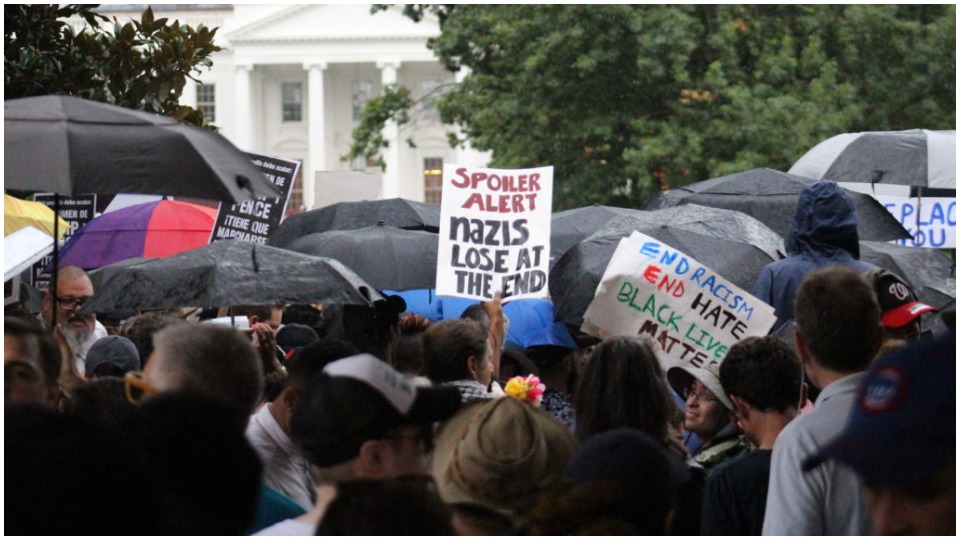
WASHINGTON—When it came down to the numbers of so-called “alt-right” white nationalist haters versus the counter-demonstrators—of all races, creeds, colors and sexes—in D.C. on August 12, there were a lot more of us than there were of them.
The planned “Unite the Right 2” march on Lafayette Square in front of the White House fizzled and their main supporter, President Donald Trump, wasn’t even home. He was playing golf at one of his courses in New Jersey as the straggling group of about 20 white supremacists paraded around in the capital.
Meanwhile, one speaker told the crowd of counter-protesters several blocks away in Freedom Plaza that “this rally probably sextuples their support.” Her ratio estimate, as it turns out, was way too low.
Both rallies were peaceful, and a large police presence made sure they stayed apart. Much of the area north of the White House was closed to auto traffic, and streets were blocked by police cars with flashing lights, dump trucks, and buses.
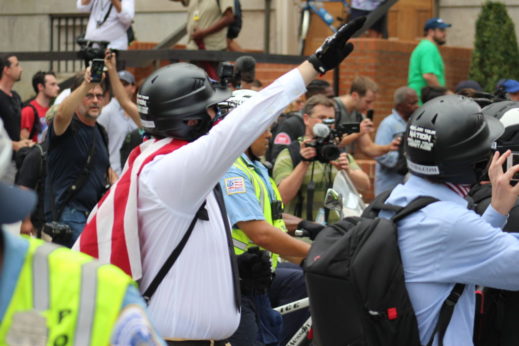
Trump tweeted a statement the day before that “the riots in Charlottesville a year ago”—which the Unite the Right rally was called to commemorate—“resulted in senseless death and division.” But he didn’t say who rioted, the white supremacists, and who got killed, counter-protester Heather Heyer.
And even if he had, the counter-protesters didn’t believe him, anyway. Trump, they bluntly said, encourages the haters. “Trump: Racist. Fascist. Traitor,” read a hand-made sign. But the haters were the main target. “’Unite the right’ unites the wrong,” read a handwritten sign.
“It’s important to know we can’t ignore the Nazis,” said Amanda Duzak, a member of the D.C. local of National Nurses United. She lauded the reaction of initial anti-right-wing rallies in Boston and Chicago last year, where each drew more than 40,000 people.
“AltRight = American ISIS,” read Baltimore retiree Jay Davis’s sign, one of many pinning the terrorist label on the white nationalists. Other handmade signs superimposed the European red road sign that bans specific acts—a red circle with a slash—over a swastika, adding denunciatory words.
“I wouldn’t normally pay attention to such losers,” said one woman, who declined to give her name, but whose sign compared the alt-right to the Nazis and the Confederacy. It said the others “lost wars” and the alt-right “will lose this one, too.”
“But as Dr. Martin Luther King said, ‘There comes a time when silence is betrayal.’ And bullies are losers, so it comes time to mock their insecurities,” the sign-holder said.
“It’s our strength and our unity and our diversity” in D.C. “that’s the message we’re sending,” said one speaker, the Rev. Graylan Hagler, a well-known D.C. pastor and civil rights activist. “This is a city of unity and diversity and inclusivity and not of xenophobia.
“We are standing against the hateful message these fools in the White House and these fools in the Congress are trying to perpetrate on this nation.”
Several signs riffed on Trump’s campaign slogan about U.S. greatness. “Make Racism Wrong Again,” said one, a sign held by a Civil Service Employees Association/AFSCME retiree who traveled to D.C. from Rochester, N.Y., “because this is important.” She declined to give her name.
David Klassen, a youthful adjunct professor in New York, who used to be an Auto Workers member at the union’s grad student TA/RA unit at New York University, said that “whenever people call for solidarity, I come,” along with 29 others from New York crammed into three vans.
“I support the people in our community who stand against the Nazis,” said D.C. resident and Professional and Technical Engineers member Adam Simpson, wearing a red T-shirt reading “There is power in a union.”
“I think we have to take a stand against racism and white supremacy,” said Service Employees Local 500 retiree Dolly Kildee of Montgomery County, Md. “We have to show the racists that we are here” against them.
As might be expected at a mass rally of Trump foes, groups and speakers embraced other causes, too. One speaker gave a passionate plea against Palestinian oppression. Pro-LGBTQ signs and T-shirts were frequent. Black Lives Matter held its own rally before joining the main group at Freedom Square. And the Methodists’ progressive wing sent a large delegation, with peace as its main theme.
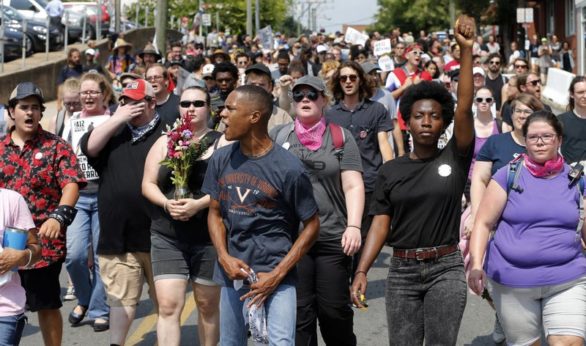
One progressive D.C. Jewish group erected a giant marionette in dark purple robes—not judicial black—against Trump’s latest U.S. Supreme Court nominee, Brett Kavanaugh. Their nearby banner, white on dark blue and festooned with Stars of David, promised the racists: “We’ll outlive them.”
Leah Widemann’s hand-written sign read: “Stop gun violence. Disarm the police.” “Remember when we had a president who liked journalists better than Nazis?” read a sign written by a young woman lawyer, Britt, who declined to give her last name.
Speakers and signs also evoked Heyer, the 32-year-old counter-protester killed in Charlottesville when a neo-Nazi deliberately rammed his speeding car into the crowd of demonstrators, murdering her and injuring dozens more. The neo-Nazi is now in jail, without bond, on first-degree murder charges.
“We should be respecting her today,” said one man, touching up his sign, which showed the Charlottesville memorial to Heyer: Her picture propped on the pavement at the site, surrounded by flowers.



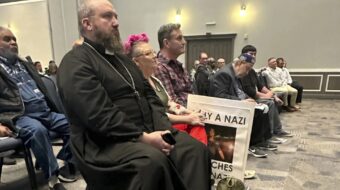
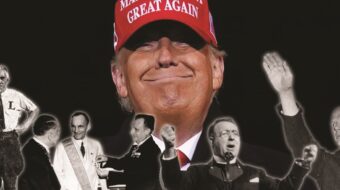
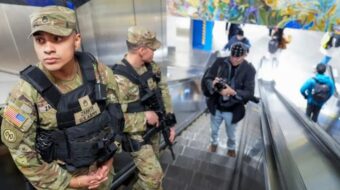






Comments